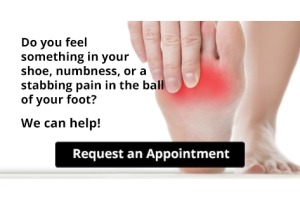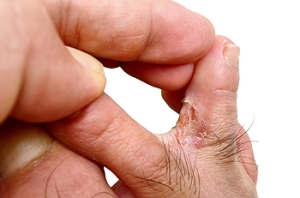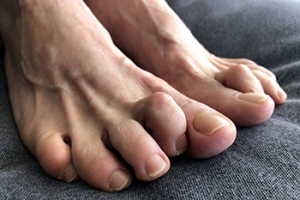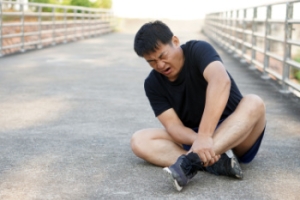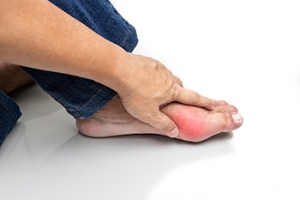
Why Live with Pain and Numbness in Your Feet?
Ways to Avoid Falling at Home
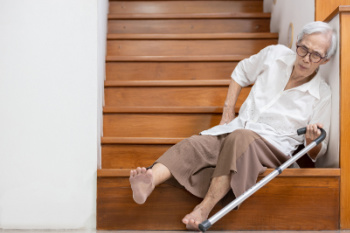
Falls can happen in an instant, often resulting from a trip on a rug or a slip on a wet floor. For older adults, these incidents can lead to serious medical complications. Every year, emergency rooms treat 3 million older individuals for fall-related injuries. Reports show that one out of five falls causes significant harm such as broken bones or head injuries. Age-related changes like reduced bone density, slower reaction times, and balance issues increase the likelihood of injury from falls. To reduce the risk, it is essential to safety-proof the home environment. Begin by ensuring that the bed height allows feet to rest flat on the floor. Use a bed cane for assistance and keep a walker nearby. Remove clutter from floors and stairs, clear pathways, and eliminate throw rugs. Install grab bars in bathrooms and railings on stairways for added support. Update lighting by replacing bulbs with brighter ones and adding nightlights in critical areas. Finally, check footwear to ensure that your shoes fit properly, are comfortable, and provide adequate support. A podiatrist can offer valuable advice on proper footwear and foot health to help prevent falls. If you are experiencing frequent falls at home, it is suggested that you make an appointment with a podiatrist for an exam and treatment options.
Preventing falls among the elderly is very important. If you are older and have fallen or fear that you are prone to falling, consult with one of our podiatrists from Centers for Foot & Ankle Care. Our doctors will assess your condition and provide you with quality advice and care.
Every 11 seconds, an elderly American is being treated in an emergency room for a fall related injury. Falls are the leading cause of head and hip injuries for those 65 and older. Due to decreases in strength, balance, senses, and lack of awareness, elderly persons are very susceptible to falling. Thankfully, there are a number of things older persons can do to prevent falls.
How to Prevent Falls
Some effective methods that older persons can do to prevent falls include:
- Enrolling in strength and balance exercise program to increase balance and strength
- Periodically having your sight and hearing checked
- Discuss any medications you have with a doctor to see if it increases the risk of falling
- Clearing the house of falling hazards and installing devices like grab bars and railings
- Utilizing a walker or cane
- Wearing shoes that provide good support and cushioning
- Talking to family members about falling and increasing awareness
Falling can be a traumatic and embarrassing experience for elderly persons; this can make them less willing to leave the house, and less willing to talk to someone about their fears of falling. Doing such things, however, will increase the likelihood of tripping or losing one’s balance. Knowing the causes of falling and how to prevent them is the best way to mitigate the risk of serious injury.
If you have any questions, please feel free to contact one of our offices located in Merrillville, Portage, Michigan City/LaPorte, and Schererville, IN . We offer the newest diagnostic and treatment technologies for all your foot care needs.
Falls Prevention
Elderly Americans are very susceptible to falls as they get older. Everyone experiences decreases in flexibility, balance, strength, and the senses as they age. This correlates to some eye-opening statistics. 1 in 4 Americans aged 65 and older fall each year. An elderly American is being treated for a fall in an emergency room every 11 seconds. In light of these striking statistics, one can see the importance of taking steps to prevent falls.
Finding an exercise program for the elderly is an excellent way to reduce the likelihood of falls. Look for an exercise program that improves strength and balance. Elderly people who live a more sedentary lifestyle, with little physical activity, are at an increased risk of falling. Wearing well-fitted footwear that provides good foot support and cushion will help prevent falls from poorly fitted shoes. Talking to a podiatrist about your susceptibility to falls and about inspecting your prescriptions will help to avoid any medication that could make falls more likely. Due to a decline in the senses among the elderly, having your eyes and hearing checked is recommended.
Around half of all falls occur in the household. Removing tripping hazards in the home and making it more accommodating to older persons can significantly reduce falls. Some notable household changes include increasing lighting around the house, installing grab bars in the shower and bathroom, and making sure the floor is clear of clutter. Other smart options include installing a shower chair, using rubber-bottomed rugs, and placing railings on both sides of stairwells.
Finally, discuss with a doctor and your family about your fear of falling. This will help to increase awareness among the population on the need for fall prevention. A lack of awareness on the matter, and a downplaying of importance are what increase the risks of falling. Following these tips can help to reduce the risk for yourself and your loved ones.
How to Prevent Athlete’s Foot
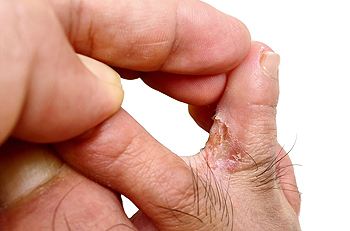 Tinea, or fungal foot infections, commonly known as athlete's foot, occur when fungi thrive in warm, moist environments, such as between the toes. These infections are extremely contagious, spreading through direct contact with infected skin or surfaces like locker room floors and swimming pools. Individuals at a higher risk include athletes, those with compromised immune systems, and people who frequently wear tight, non-breathable footwear. Symptoms include itching, burning, and peeling skin, often accompanied by redness and blisters. To prevent tinea, it is important to keep feet clean and dry, especially between the toes. It is helpful to wear breathable shoes and moisture-wicking socks, change socks regularly, and use antifungal powders. Avoid walking barefoot in public places and ensure shoes fit properly to reduce risk. In persistent cases, prescription medications may be necessary. If you have developed athlete's foot, it is strongly suggested that you visit a podiatrist for proper management.
Tinea, or fungal foot infections, commonly known as athlete's foot, occur when fungi thrive in warm, moist environments, such as between the toes. These infections are extremely contagious, spreading through direct contact with infected skin or surfaces like locker room floors and swimming pools. Individuals at a higher risk include athletes, those with compromised immune systems, and people who frequently wear tight, non-breathable footwear. Symptoms include itching, burning, and peeling skin, often accompanied by redness and blisters. To prevent tinea, it is important to keep feet clean and dry, especially between the toes. It is helpful to wear breathable shoes and moisture-wicking socks, change socks regularly, and use antifungal powders. Avoid walking barefoot in public places and ensure shoes fit properly to reduce risk. In persistent cases, prescription medications may be necessary. If you have developed athlete's foot, it is strongly suggested that you visit a podiatrist for proper management.
Athlete’s Foot
Athlete’s foot is often an uncomfortable condition to experience. Thankfully, podiatrists specialize in treating athlete’s foot and offer the best treatment options. If you have any questions about athlete’s foot, consult with one of our podiatrists from Centers for Foot & Ankle Care. Our doctors will assess your condition and provide you with quality treatment.
What Is Athlete’s Foot?
Tinea pedis, more commonly known as athlete’s foot, is a non-serious and common fungal infection of the foot. Athlete’s foot is contagious and can be contracted by touching someone who has it or infected surfaces. The most common places contaminated by it are public showers, locker rooms, and swimming pools. Once contracted, it grows on feet that are left inside moist, dark, and warm shoes and socks.
Prevention
The most effective ways to prevent athlete’s foot include:
- Thoroughly washing and drying feet
- Avoid going barefoot in locker rooms and public showers
- Using shower shoes in public showers
- Wearing socks that allow the feet to breathe
- Changing socks and shoes frequently if you sweat a lot
Symptoms
Athlete’s foot initially occurs as a rash between the toes. However, if left undiagnosed, it can spread to the sides and bottom of the feet, toenails, and if touched by hand, the hands themselves. Symptoms include:
- Redness
- Burning
- Itching
- Scaly and peeling skin
Diagnosis and Treatment
Diagnosis is quick and easy. Skin samples will be taken and either viewed under a microscope or sent to a lab for testing. Sometimes, a podiatrist can diagnose it based on simply looking at it. Once confirmed, treatment options include oral and topical antifungal medications.
If you have any questions, please feel free to contact one of our offices located in Merrillville, Portage, Michigan City/LaPorte, and Schererville, IN . We offer the newest diagnostic and treatment technologies for all your foot care needs.
How to Deal with Athlete's Foot
Athlete’s foot is a type of fungal infection that affects the skin on the feet. It is caused when the tinea fungus grows on the foot. It is possible to catch the fungus through direct contact with someone who has it or by touching a surface that is contaminated with it. This type of fungus thrives in warm, moist environments such as showers, locker room floors, and swimming pools. Your risk of getting it may also increase by wearing tight-fitting, closed-toe shoes, or by having sweaty feet.
Symptoms of athlete’s foot include itching, stinging or burning sensations between the toes. You may also experience toenails that are discolored, thick, crumbly, or toenails that pull away from the nail bed.
Your podiatrist may diagnose athlete’s foot by detecting these symptoms or by doing a skin test to see if there is a fungal infection present. The most common exam used to detect Athlete’s foot is a skin lesion potassium hydroxide exam. To use this method, your doctor will scrape off a small area of the infected skin and place it into potassium hydroxide. The potassium hydroxide will destroy the normal cells and leave the fungal cells untouched so that they are visible under a microscope.
There are a variety of treatment options for athlete’s foot. Some medications are miconazole (Desenex), terbinafine (Lamisil AT), clotrimazole (Lotrimin AF), butenafine (Lotrimin Ultra), and tolnaftate (Tinactin). While these options may be able to treat your fungus, it is best that you consult with a podiatrist in order to see which treatment option may work best for you.
In some cases, Athlete’s foot may lead to complications. A severe complication would be a secondary bacterial infection which may cause your foot to become swollen, painful, and hot.
There are ways that you can prevent athlete’s foot. Washing your feet with soap and water each day and drying them thoroughly is an effective way to prevent infections. You also shouldn’t share socks, shoes, or towels with other people. It is crucial that you wear shower sandals in public showers, around swimming pools, and in other public places. Additionally, you should make sure you wear shoes that can breathe and change your socks when your feet become sweaty. If you suspect that you have Athlete’s foot, you should seek help from a podiatrist as soon as possible.
Managing Hammertoe

A hammertoe is a foot deformity where toes become bent at the middle joint, typically affecting the second, third, or fourth toes. A hammertoe worsens over time due to muscle imbalance, often the result of wearing ill-fitting shoes. Shoes that are too narrow or have high heels force the toes into a bent position. This causes friction, pain, and the development of corns or calluses. Symptoms can include swelling, redness, or difficulty straightening the toe. Certain non-surgical approaches may be effective in early stages of hammertoe formation. These include wearing properly fitted shoes with a roomy toe box to alleviate pressure and allow toes to spread naturally. Exercises to stretch and strengthen toe muscles also may provide relief. Pads or cushions can be helpful, and may help to prevent further irritation. When the affected joint becomes rigid and non-flexible, surgical options like tendon lengthening or joint fusion may be necessary. If you have developed a hammertoe, it is suggested that you schedule an appointment with a podiatrist for an exam and treatment options.
Hammertoe
Hammertoes can be a painful condition to live with. For more information, contact one of our podiatrists from Centers for Foot & Ankle Care. Our doctors will answer any of your foot- and ankle-related questions.
Hammertoe is a foot deformity that affects the joints of the second, third, fourth, or fifth toes of your feet. It is a painful foot condition in which these toes curl and arch up, which can often lead to pain when wearing footwear.
Symptoms
- Pain in the affected toes
- Development of corns or calluses due to friction
- Inflammation
- Redness
- Contracture of the toes
Causes
Genetics – People who are genetically predisposed to hammertoe are often more susceptible
Arthritis – Because arthritis affects the joints in your toes, further deformities stemming from arthritis can occur
Trauma – Direct trauma to the toes could potentially lead to hammertoe
Ill-fitting shoes – Undue pressure on the front of the toes from ill-fitting shoes can potentially lead to the development of hammertoe
Treatment
Orthotics – Custom made inserts can be used to help relieve pressure placed on the toes and therefore relieve some of the pain associated with it
Medications – Oral medications such as anti-inflammatories or NSAIDs could be used to treat the pain and inflammation hammertoes causes. Injections of corticosteroids are also sometimes used
Surgery – In more severe cases where the hammertoes have become more rigid, foot surgery is a potential option
If you have any questions please contact one of our offices located in Merrillville, Portage, Michigan City/LaPorte, and Schererville, IN . We offer the newest diagnostic and treatment technologies for all your foot and ankle needs.
Hammertoe
Hammertoe is a foot deformity that occurs due to an imbalance in the tendons, muscles, or ligaments that are responsible for holding the toes in their normal position. This condition may be caused by poor footwear, foot structure, trauma, and disease. The most common solution for hammertoe is to relieve the pain by changing your footwear and wearing orthotics. In severe cases, surgery may be required.
The shoes that are most likely to cause hammertoe are high heeled shoes or shoes that are too tight in the toe box. Tight shoes will force your toes to crowd together in a curled position. This position will likely continue when you take your shoes off. Another cause is trauma. When you stub your toe, you are increasing the chance that you will develop hammertoe.
There are risk factors that may make you more likely to develop this condition. Women are more likely to have the condition compared to men, and it is also more likely to appear in those who are older in age.
Many different foot problems can be avoided by wearing shoes that have adjustability, adequate toe room, and low heels. Furthermore, if you want to buy new shoes, you should look to purchase them at the end of the day and make sure you know your correct size. The importance of buying shoes at the end of the day is that your feet swell as the day progresses. You should also ensure that you are wearing your correct size because your shoe size may change as you grow older.
To diagnose someone with hammertoe, your podiatrist will need to conduct a thorough examination of your foot. Your doctor may even order an x-ray to evaluate the bones and joints of your feet and toes.
If you have hammertoe, your podiatrist may recommend that you wear shoes that fit you better along with inserts to place inside them. Additionally, he or she may suggest special exercises for you to perform to stretch your toes. One helpful exercise it to pick up marbles with your feet or crumple a towel with your toes.
Prior to meeting with your podiatrist, it will be helpful to make a list of all the symptoms you are experiencing. You should also make a note of medications you are taking and important personal information about your medical history.
Ankle Pain Can Interfere With Walking
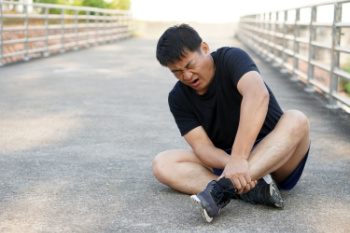 Ankle pain while walking is a common issue that can arise from various conditions and injuries. This can be difficult just with regular movement, but particularly frustrating when you count walking as an important form of exercise in your life. The ankle is a complex joint connecting the foot to the leg, consisting of bones, ligaments, tendons, and muscles. Pain can result from sprains, strains, fractures, or conditions such as arthritis, tendinitis, and bursitis. Overuse, wearing improper footwear, and sudden changes in physical activity can also contribute to ankle pain. This pain can interfere with walking by causing discomfort, instability, and limited range of motion. Ankle pain may present as a sharp, stabbing sensation or a dull ache, often worsening with weight-bearing activities. Swelling, bruising, and stiffness are common symptoms accompanying the pain. To alleviate ankle pain, rest, compression, and elevation are effective initial treatments. Pain relievers and wearing supportive footwear can also help. Preventative measures include strengthening and stretching exercises, wearing appropriate shoes, and gradually increasing activity levels. If you have persistent or severe ankle pain, it is suggested that you schedule an appointment with a podiatrist for a proper diagnosis and treatment plan so you can walk comfortably again.
Ankle pain while walking is a common issue that can arise from various conditions and injuries. This can be difficult just with regular movement, but particularly frustrating when you count walking as an important form of exercise in your life. The ankle is a complex joint connecting the foot to the leg, consisting of bones, ligaments, tendons, and muscles. Pain can result from sprains, strains, fractures, or conditions such as arthritis, tendinitis, and bursitis. Overuse, wearing improper footwear, and sudden changes in physical activity can also contribute to ankle pain. This pain can interfere with walking by causing discomfort, instability, and limited range of motion. Ankle pain may present as a sharp, stabbing sensation or a dull ache, often worsening with weight-bearing activities. Swelling, bruising, and stiffness are common symptoms accompanying the pain. To alleviate ankle pain, rest, compression, and elevation are effective initial treatments. Pain relievers and wearing supportive footwear can also help. Preventative measures include strengthening and stretching exercises, wearing appropriate shoes, and gradually increasing activity levels. If you have persistent or severe ankle pain, it is suggested that you schedule an appointment with a podiatrist for a proper diagnosis and treatment plan so you can walk comfortably again.
Ankle and foot injuries are common among athletes and in many sports. They can be caused by several problems and may be potentially serious. If you are feeling pain or think you were injured in a sporting event or when exercising, consult with one of our podiatrists from Centers for Foot & Ankle Care. Our doctors will assess your condition and provide you with quality foot and ankle treatment.
Common Injuries
The most common injuries that occur in sporting activities include:
- Achilles Tendonitis
- Achilles Tendon Rupture
- Ankle Sprains
- Broken Foot
- Plantar Fasciitis
- Stress Fractures
- Turf Toe
Symptoms
Symptoms vary depending upon the injury and in some cases, there may be no symptoms at all. However, in most cases, some form of symptom is experienced. Pain, aching, burning, bruising, tenderness, tightness or stiffness, sensation loss, difficulty moving, and swelling are the most common symptoms.
Treatment
Just as symptoms vary depending upon the injury, so do treatment options. A common treatment method is known as the RICE method. This method involves rest, applying ice, compression and elevating the afflicted foot or ankle. If the injury appears to be more serious, surgery might be required, such as arthroscopic or reconstructive surgery. Lastly, rehabilitation or therapy might be needed to gain full functionality in the afflicted area. Any discomfort experienced by an athlete must be evaluated by a licensed, reputable medical professional.
If you have any questions, please feel free to contact one of our offices located in Merrillville, Portage, Michigan City/LaPorte, and Schererville, IN . We offer the newest diagnostic and treatment technologies for all your foot care needs.
Sports Related Foot and Ankle Injuries
Foot and ankle injuries are common among athletes and those who exercise frequently. Most of these injuries are non-life-threatening and can heal in weeks with proper treatment and care. Serious injuries, however, require urgent medical treatment.
Common minor injuries include ankle sprains, ankle strains, Achilles tendonitis, plantar fasciitis, stress fractures, and turf toe. An ankle sprain is when the ligaments in the ankle have either become stretched or torn. When the muscle or tendon is stretched or torn, it is an ankle strain. When the big toe is sprained, it is known as turf toe. Achilles tendonitis is the overuse and inflammation of the Achilles tendon. Plantar fasciitis is the inflammation of the plantar fascia and generally occurs from overuse in athletics. Stress fractures are also caused from overuse and are small cracks in the bone.
Achilles tendon ruptures are common, but more serious. This injury occurs when the Achilles tendon, the largest tendon in the body, ruptures. In most cases, this causes severe pain and difficulty walking; some who have experienced this injury have reported, however, no signs or symptoms. A laceration is a deep cut that can occur anywhere on the body. Lacerations on the foot are rarer, but can occur from things like metal cleats landing on the foot.
Treatment options cover a wide range of methods based upon the injury and its severity. Conditions like plantar fasciitis, stress fractures, Achilles tendonitis, turf toe and ankle sprains/ strains can heal on their own without immediate medical care, but seeing a podiatrist to monitor the injury is always recommended. Following the RICE (Rest, Icing, Compression, and Elevation) protocol is generally enough to treat minor injuries. This means resting the foot by either keeping pressure off the foot or not walking at all. Icing the injury will help reduce swelling and pain. Compressing the wound with a wrap will immobilize and help promote healing. Finally, keeping the wound elevated will also reduce swelling and also help the healing process.
It is important to note that even minor injuries can vary in severity, with grade one being a minor injury and grade three requiring urgent care by a podiatrist. Achilles tendon ruptures and lacerations on the foot generally require urgent medical care and treatment options that need a podiatrist. These could include imaging tests, stitches for cuts, rehabilitation, and casts or braces. Every case is different, however, so it is always recommended to see a podiatrist when pain in the foot does not disappear.
Gout's Impact on Foot Health
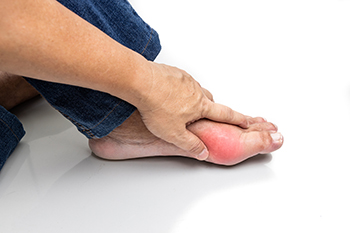
Gout, a form of inflammatory arthritis, can wreak havoc on foot health, causing intense pain, swelling, and stiffness. It often impacts the big toe first. It occurs when uric acid levels in the blood rise, leading to the formation of sharp urate crystals in the joints, often targeting the big toe joint. These crystals trigger sudden and severe bouts of pain, known as gout attacks, which can make walking and even wearing shoes unbearable. Managing gout involves dietary changes to help control uric acid levels. Foods rich in purines, such as red meat, organ meats, and shellfish, should be limited, as they can exacerbate gout symptoms. Conversely, incorporating plenty of fruits, vegetables, whole grains, and low-fat dairy products into the diet can help lower uric acid levels and reduce the frequency and severity of gout attacks. Staying hydrated by drinking plenty of water is also vital for flushing out uric acid from the body. If you have pain in your big toe and surrounding areas, it is suggested that you consult a podiatrist who can diagnose, treat, and offer additional nutritional tips to manage gout.
Gout is a painful condition that can be treated. If you are seeking treatment, contact one of our podiatrists from Centers for Foot & Ankle Care. Our doctors will treat your foot and ankle needs.
What Is Gout?
Gout is a form of arthritis that is characterized by sudden, severe attacks of pain, redness, and tenderness in the joints. The condition usually affects the joint at the base of the big toe. A gout attack can occur at any random time, such as the middle of the night while you are asleep.
Symptoms
- Intense Joint Pain - Usually around the large joint of your big toe, and it most severe within the first four to twelve hours
- Lingering Discomfort - Joint discomfort may last from a few days to a few weeks
- Inflammation and Redness -Affected joints may become swollen, tender, warm and red
- Limited Range of Motion - May experience a decrease in joint mobility
Risk Factors
- Genetics - If family members have gout, you’re more likely to have it
- Medications - Diuretic medications can raise uric acid levels
- Gender/Age - Gout is more common in men until the age of 60. It is believed that estrogen protects women until that point
- Diet - Eating red meat and shellfish increases your risk
- Alcohol - Having more than two alcoholic drinks per day increases your risk
- Obesity - Obese people are at a higher risk for gout
Prior to visiting your podiatrist to receive treatment for gout, there are a few things you should do beforehand. If you have gout you should write down your symptoms--including when they started and how often you experience them, important medical information you may have, and any questions you may have. Writing down these three things will help your podiatrist in assessing your specific situation so that he or she may provide the best route of treatment for you.
If you have any questions, please feel free to contact one of our offices located in Merrillville, Portage, Michigan City/LaPorte, and Schererville, IN . We offer the newest diagnostic and treatment technologies for all your foot care needs.
